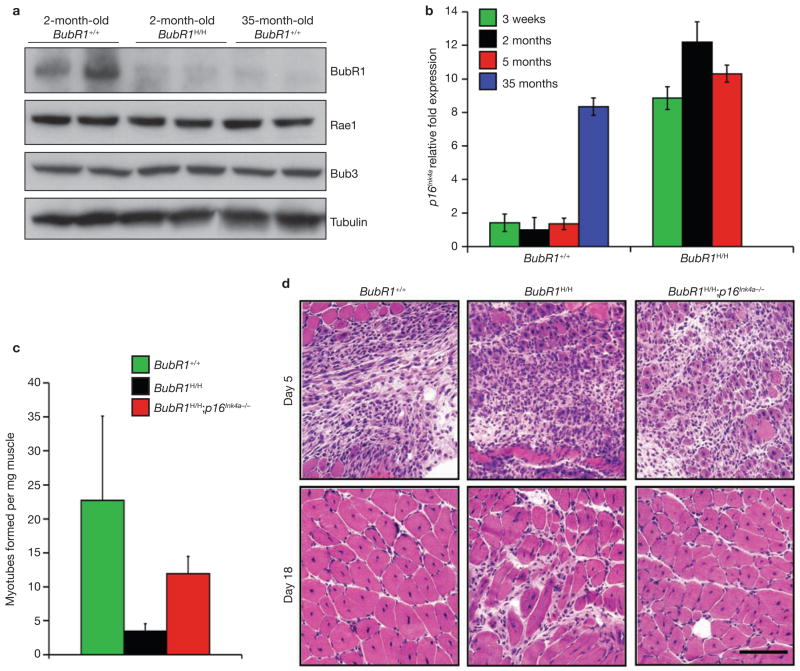Figure 2.
Inverse correlation between BubR1 and p16Ink4a expression levels with ageing. (a) Western blot analysis of gastrocnemius muscle in young wild-type and BubR1H/H mice and old wild-type mice. Blots were probed with antibodies against BubR1, Bub3 and Rae1. Anti-tubulin was used as a loading control. Note that the mitotic checkpoint proteins Bub3 and Rae1 remain highly expressed as wild-type mice age. Uncropped images of the scans are shown in Supplementary Information, Fig. S6a. (b) p16Ink4a expression in wild-type and BubR1H/H gastrocnemius muscles at various ages analysed by qRT–PCR. Data are mean ± s.d. (n = 3 males per genotype and age group, with triplicate measurements taken). Values were normalized to GAPDH. Relative fold expression is to 2-month-old wild-type values. (c) Myotube formation potential of gastrocnemius muscles from 5-month-old mice of the indicated genotypes analysed by a well-standardized in vitro assay. Data are mean ± s.d. (n = 4). (d) Cardiotoxin-treated gastrocnemius muscle of 5-month-old wild-type, BubR1H/H and BubR1H/H;p16Ink4a−/− mice at 5 or 18 days after injection. Note that all gastrocnemius muscles show an extensive hypercellular response to cardiotoxin injection by day 5 regardless of genotype. Wild-type and BubR1H/H;p16Ink4a−/− mice have complete restoration of muscle architecture by myofibres with central nuclei by day 18, whereas BubR1H/H mice have been unable to restore normal tissue structure. Scale bar is 100 μm.

